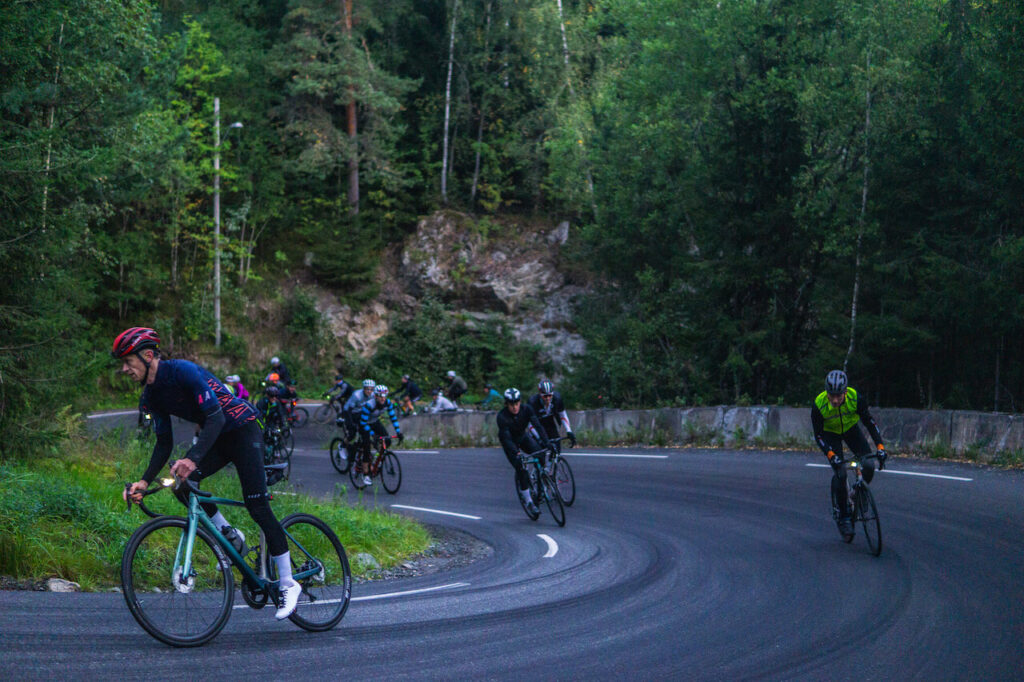Where forest meets city, tarmac meets gravel
Register for free to unlock full access to this page!
You know, not many capital cities can boast the kind of natural accessibility that Oslo offers. Picture this: a sprawling Nordic forest, a serene fjord stretching as far as the eye can see… It’s like a playground for outdoor adventures, right at the doorstep of the city.
But here’s the kicker: where exactly does the city end and the forest begin? It’s a bit of a blurred line, to be honest. You might stumble upon a marker reminding you that you’re still technically in Oslo, even though all you can see are trees!
Indeed, Oslo’s been getting some buzz as the gravel capital of Europe. With more than 400 square kilometers of car-free roads winding through forests and skirting pristine lakes, it’s a haven for wild camping and cozy wooden cabins.
And hey, if smooth rides are more your style, you can’t beat cruising along the Oslo Fjord on those quiet country roads. It’s like stepping into a postcard, with charming fjord towns dotting the landscape.
So yeah, welcome to my neck of the woods. Literally!

Oslo has probably the best climate of all the cities in Norway. Summers are warm and usually settled, and winters offer a dry cold, which is pleasant to experience if wrapped up warm. The temperatures for cycling during May through to the end of September can be very pleasant and rainfall is half that of the west coast. In addition, the fjord offers a lot of shelter, making windy days a limited issue.
Sometimes in the summer short but extreme downpours can happen and local flooding can occur. In additon, the climate in the forests can fluctuate and you should expect it to be 5 degrees lower than the city.
Oslo’s public transport is world-class, with modern electric-run buses covering the whole city and its outer areas. There is also a modern subway, trams, and ferries crossing the fjord or visiting islands. There are also plenty of very effective local train services to all the neighbouring towns.
It’s straightforward to take your bike up to the forest boundaries on all types of transport, but the subway is most practical for space. Nevertheless, today, Oslo has an extensive and growing cycle infrastructure, making it easy to get around and out of the city if you plan accordingly.
We should note that Oslo is not a flat city like Copenhagen. There is some 200m of climbing to reach the northern boundaries of the forest, but around the fjord, it is flat. If you have a bike, public transport should not be required, but it is handy to use if a mechanical problem occurs or your legs stop working.
You know, most cycle tourists rolling into Oslo’s Gardermoen Airport are quick to hit the road without even giving this area a chance to shine. I get it, the allure of those deep fjords and towering mountains is hard to resist.
But hold up a sec! Before you go chasing after those mountain highs, consider this: Oslo might just be showing off some primo summer vibes. I’m talking sunny days and warm breezes. So why rush off to the chilly mountains? You might end up kicking yourself when you realize that a few days of cruising along remote gravel paths, taking dips in lakes, and wild camping under clear skies could’ve been the perfect kickstart to your Norway adventure.





Bikes built to tackle Norway’s challenging and diverse terrain on all types of road surfaces.
Join Oslo Dawn Patrol for both gravel and road rides on Tuesday, Wednesday (gravel – warmer season only), and Thursday each week all year. This social ride is open to anyone who enjoys riding their bike in the early morning hours.

Cycle Norway is dedicated to making Norway, safer and more enjoyable to experience by bike and to inspire and inform a growing audience of the opportunities available.